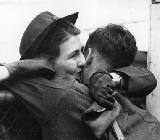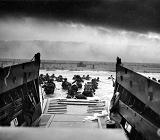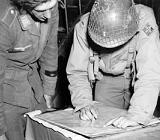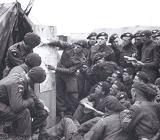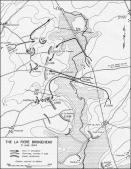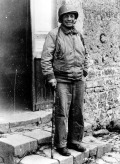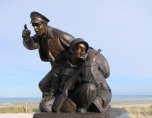The Utah Beach Landings
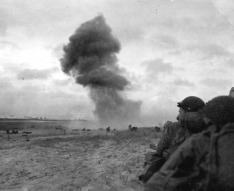
Artillery exploding on Utah Beach, D-Day
This is the stretch of the Normandy coastline where the son of President Teddy Roosevelt came ashore, leading the first assault wave. By an incredible stroke of good fortune the Force U Invasion flotilla were pushed south of their original chosen landing zone and landed on a section of the beach that was very lightly defended. Suffering the fewest casualties of all of the five invasion beaches on D-Day, the Fourth Infantry Division found their passage inland through the German defenses greatly aided by the two American Paratroop Divisions dropped in behind the beach a few hours previously.
The Battle Sites/Sights
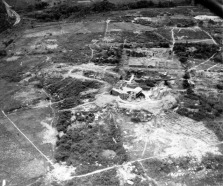
German Gun Battery behind Utah Beach
Planned Landing Position
Here you can see point on the French coastline where the 4th US Infantry Division was supposed to start their assault on Hitler's "Fortress Europa". Stretching north from the German Defensive position Wn8, this stretch of coastline had been strongly fortified by the German occupiers. The Memorial to the 2nd Free French Armoured Division is situated at the eastern end of Exit Four of the beach and there are some impressive bunkers to be seen and are open to the curious to wander in and look around for a visit, most of these bunkers a lot better preserved and more accessible than those bunkers behind the other landing sectors.
Here you can see point on the French coastline where the 4th US Infantry Division was supposed to start their assault on Hitler's "Fortress Europa". Stretching north from the German Defensive position Wn8, this stretch of coastline had been strongly fortified by the German occupiers. The Memorial to the 2nd Free French Armoured Division is situated at the eastern end of Exit Four of the beach and there are some impressive bunkers to be seen and are open to the curious to wander in and look around for a visit, most of these bunkers a lot better preserved and more accessible than those bunkers behind the other landing sectors.
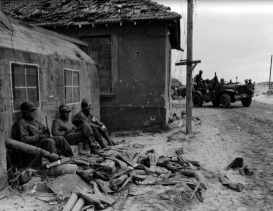
German (later US) Radio Bunker on Utah Beach
Actual Landing Position
This is spot on the beach where the 4th US Infantry Division's 8th Regiment, led by General Teddy Roosevelt Jr, first landed during their assault on the morning of June 6th, 1944. Although off course by a mile and a half (2.5km), this sector of the beach was much less well defended by the Germans. Suffering fewer than 30 killed in the initial assault, the American seaborne forces pushed rapidly inland to link up with the Paratroopers. There are numerous monuments to the various different American units involved in the assault including the impressive and recently added Memorial to the US Navy, as well as the Preserved German Radio/Telephone communications bunker (later US Navy Radio/Telephone communications bunker) in the basement of the appropriately named Roosevelt Cafe on the beach, the Utah Beach Museum and an impressive collection of German beach obstacles and the German Ammunition storage bunker now converted to public toilets.
This is spot on the beach where the 4th US Infantry Division's 8th Regiment, led by General Teddy Roosevelt Jr, first landed during their assault on the morning of June 6th, 1944. Although off course by a mile and a half (2.5km), this sector of the beach was much less well defended by the Germans. Suffering fewer than 30 killed in the initial assault, the American seaborne forces pushed rapidly inland to link up with the Paratroopers. There are numerous monuments to the various different American units involved in the assault including the impressive and recently added Memorial to the US Navy, as well as the Preserved German Radio/Telephone communications bunker (later US Navy Radio/Telephone communications bunker) in the basement of the appropriately named Roosevelt Cafe on the beach, the Utah Beach Museum and an impressive collection of German beach obstacles and the German Ammunition storage bunker now converted to public toilets.
